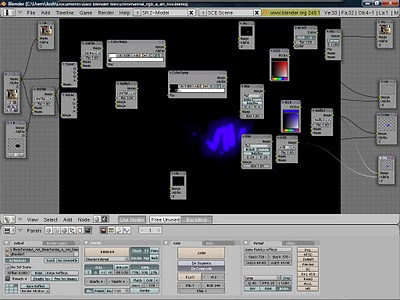 Knowing
Knowing is a creepy, post 9/11 apocalyptic film starring Nicholas Cage and Rose Byrne. A disturbed child writes down a list of numbers which is sealed into a time capsule for fifty years, then given to the son of Cage's physics professor. When decoded the list corresponds to major disasters during the fifty year period, with clues to three disasters still to come. Cage becomes obsessed with trying to prevent these events and also with tracking down the child's family to solve the mystery. Meanwhile mysterious figures follow Cage and give black pebbles to his son.
The film does not ultimately explain any of it's premise - in particular the reason for the existence of the list remains unclear, there is no attempt to define whether the disasters are occurring for a reason e.g. punishment or as part of some greater scheme, or if they are still natural and random yet somehow predictable. Cage attempts to divert them but it is unclear whether he has made any difference, or whether this is even possible. It's not clear exactly why Cage and his family are special, or even if they are.
This is OK. The film is called Knowing. Not Understanding, or Preventing. The central theme is what happens if you know your fate - for example, you have a terminal illness, you've run out of treatment options and you know roughly how long you have to live. In this situation you can't change the outcome but what can you still do with the time left to you? The characters have to choose between trying to escape their fate, using their time to help others, setting their affairs in order, righting old wrongs, or seeking understanding - and they are in a great hurry, with little time to choose and no guarantee that they will succeed in their choice. The theme is embodied perfectly by Byrne's character who has always known the date of her death, but is in denial until the events of the film force her to act with only hours left.
You may like or dislike the ending but read on: Firstly as many commentators have pointed out, it doesn't compromise on the film's theme either by making everything all right with a quick fix, or by offering an equally quick explanation. Secondly, as with the rest of the film it is beautifully shot. The film shares a few plot points with
2012 but where that film is loud, colourful and showy, Knowing is quiet, subdued and eerie.
There are plot holes. Dammit. The lack of explanation for the premise is actually quite a good thing, but some scenes definitely need explanation. Cage's ability to figure out the third disaster in a few seconds is a bit silly - surely if [SPOILER REDACTED] it would have been predicted much earlier! Worse, when Cage's character takes his disaster prediction list to his scientific friend he is laughed out of town on the basis that he is reading too much into the numbers. Would make sense if he had used his own idiosyncratic system to "find" the references - after all
Michael Drosnin does this for a living - but the list seems to feature several hundred events, in order, all clearly identifiable once you've found the first one. Together with the list's tamper-proof history it would have to be taken more seriously by a scientist - in fact you would need to go to extraordinary lengths to disprove it.
Overall though I was impressed with this film for building up such a strong atmosphere, for bringing subtlety to the apocalyptic genre and for generally not wimping out on its premise.
 I was impressed by the group of excitable orange-suited RailTrack engineers who were making a fuss over Bittern (a sister locomotive to Mallard) on a rare excursion down south.
I was impressed by the group of excitable orange-suited RailTrack engineers who were making a fuss over Bittern (a sister locomotive to Mallard) on a rare excursion down south.







 I like noodles!
I like noodles!







